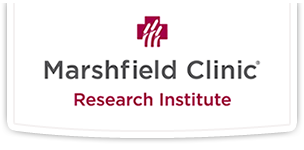In scientific writing, the most widely recognized unethical action is plagiarism. Plagiarism is a very serious form of ethical misconduct. An ethical professional is expected to operate at the highest level of scientific integrity and must avoid anything that could be conceived as plagiarism.
Plagiarism has been traditionally defined as the taking of words, images, ideas, etc. from an author and presenting them as one's own.
Although plagiarism can take many forms (such as public speeches and presentations) there are two major types in scientific writing.
- Plagiarism of ideas: Appropriating an idea (eg., an explanation, a theory, a conclusion, a hypothesis, a metaphor) in whole or in part, or with superficial modifications without giving credit to its originator.
- Plagiarism of text: Copying a portion of text from another source without giving credit to its author and without enclosing the borrowed text in quotation marks.
How to Avoid Plagiarism
Always acknowledge the source of your idea
- Any verbatim text taken from another author must be enclosed in quotation marks.
- Avoid inappropriate paraphrasing: Scholarly writing, including scientific writing, often involves the paraphrasing and summarizing of others' work. Summarizing means to condense, into our own words, a substantial amount of material.
Paraphrasing means to restate in detail, and in our own words, a certain portion of another author's writing. Whether summarizing or paraphrasing, every source must always be acknowledged. Additionally, when paraphrasing you must reproduce the exact meaning of the other author's ideas or facts. - "You plagiarize even when you do credit the author but use his exact words without so indicating with quotation marks or block indentation. You also plagiarize when you use words so close to those in your source, that if your work were placed next to the source, it would be obvious that you could not have written what you did without the source at your elbow" (Booth, Colomb, & Williams, 1995; p. 167).
Plagiarism and common knowledge
One general exception to citing sources occurs when the information represents 'common knowledge'. If the material being discussed is assumed to be known by the readership, then one need not cite its origin. However, the question of whether the information constitutes common knowledge depends on several factors, such as who the author is, who the readers are, and the expectations of each of these groups. Authors should follow this rule of thumb: when in doubt as to whether a concept or fact is common knowledge, provide a citation.
Self-plagiarism
Self-plagiarism occurs when authors reuse their own previously written work or data in a 'new' written paper without letting the reader know that this material has appeared elsewhere. In scholarly and scientific writing there are some situations in which reusing previous text is acceptable; however, other instances in which text and/or data are known to have been reused violate the principles of ethical writing.
- Authors who submit a manuscript for publication containing data, reviews, conclusions, etc., that have already been disseminated (eg., published in another journal, presented at a conference) must clearly indicate to the editors the nature of the previous dissemination.
- Because some instances of plagiarism, self-plagiarism, and even some writing practices that might otherwise be acceptable (eg., extensive paraphrasing or quoting of key elements of a book) can constitute copyright infringement, authors should become familiar with basic elements of copyright law.
Citing references
References are crucial in scientific writing. It is important that authors strive for accuracy when listing references in manuscripts.
- Authors should double-check their citations and should always ensure that each reference in the body of the manuscript corresponds to the correct citation in the reference section and vice versa.
- Authors should also ensure that all elements of a citation (e.g., spelling of authors' names, title, journal name) come directly from the original paper, rather than from a citation that appears on a secondary source.
- The references used in a paper should only be those that are directly related to its contents.
- Authors should always obtain the actual published paper. When the published paper cannot be obtained, cite the specific version of the material being used, whether it is conference presentation, abstract, or an unpublished manuscript.
- Do not rely on a secondary summary of a paper. Always consult the primary literature. If an author must rely on a secondary source (e.g., textbook) to describe the contents of a primary source, s/he should consult writing manuals and follow the proper naming convention. Above all, always indicate the actual source of the information being reported.
Determining Authorship
Authorship determination should have been discussed prior to beginning the research collaboration and should be based on established guidelines, such as those of the International Committee of Medical Journal Editors. Only those individuals who have made substantitve contributions to the project and/or manuscript merit authorship of a paper.
The information outlined above was derived from the following sources:
Committee on Publication Ethics (COPE)
Council of Science Editors
Uniform Requirements for Manuscripts Submitted to Biomedical Journals
